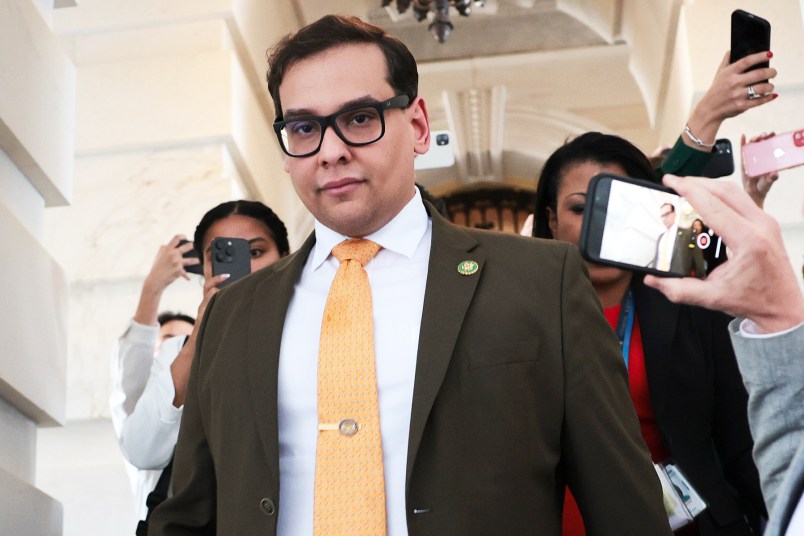A week after Oath Keepers leader Stewart Rhodes publicly urged then-President Donald Trump to “strike now” and invoke the Insurrection Act rather than conceding the 2020 election, Rhodes was invited to a meeting said to involve “multiple patriot groups” preparing for the Jan. 6 Trump rally in Washington, D.C., federal prosecutors alleged this week.
In charging papers unsealed Thursday, prosecutors said Rhodes later added the man who invited him to the meeting, James Breheny, to a messaging group that members of the Oath Keepers allegedly used to coordinate their actions during the attack itself. Several members of the far-right militia group now face heavy federal charges for their actions that day.
Breheny entered the Capitol during the attack and bragged about it to contacts in his cell phone, prosecutors alleged. He’s charged with entering a restricting building and impeding an official proceeding, among other offenses.
Rhodes has not been charged with a crime, and the Oath Keepers leader has consistently denied wrongdoing, but the federal evidence cited against Breheny offers more tantalizing glimpses of possible pre-planning for the attack on Congress.
According to an FBI agent’s affidavit in Breheny’s case, Breheny invited Rhodes to the meeting on Dec. 21, a week after Rhodes — who’s referred to as Person One in charging documents — implored Trump in an open letter, “If you fail to act while you are still in office, we the people will have to fight a bloody civil war and revolution against these two illegitimate Communist Chinese puppets, and their illegitimate regime.”
The affidavit quoted a description Breheny forwarded Rhodes of the planned meeting, which was allegedly set to take place on Jan. 3, the Sunday before the rally, in Quarryville, Pennsylvania.
“This will be the day we get our comms on point with multiple other patriot groups, share rally points etc.,” the description read, according to the court papers. “This one is important and I believe this is our last chance to organize before the show. This meeting will be for leaders only.”
Breheny allegedly told Rhodes of the planned meeting, “No cell phones. Need to be Faraday bag prior to site.” Faraday bags, the FBI noted, are containers used to prevent remote observation of cell phones.
Breheny initially told law enforcement that he did not willfully enter the Capitol, but rather that he was pushed inside by a surge of people, according to the affidavit.
But the feds allege that video footage showed that “He entered willfully and was not pushed into the Capitol,” contrary to what he initially claimed. Several texts quoted in the affidavit show Breheny telling contacts that he “Made it in!” and “I have to clear chats.”
Indeed, prosecutors allege that Breheny altered records with the intent to impair their availability for use in an official proceeding; specifically, the FBI affidavit asserts he deleted his social media account to avoid detection. An account associated with Breheny’s cell phone was deactivated two days after the attack, the affidavit alleged.
Rhodes’ presence has loomed over the Capitol attack case, even as he has not been charged with a crime: The chat group to which he allegedly added Breheny, “DC Op: Jan 6 21” was used by Rhodes and several Oath Keepers who were charged in the attack, prosecutors have said on multiple occasions. At one point during the attack, Rhodes allegedly messaged the group, “South side of the US Capitol. Patriots pounding on doors.”
In March, Rhodes told a rally crowd in Texas that the Oath Keepers were not in D.C. on Jan. 6 to attack Congress, but rather to protect Trump supporters from anti-fascists.
“If we actually intended to take over the Capitol, we’d have taken it, and we’d have brought guns,” he said.



